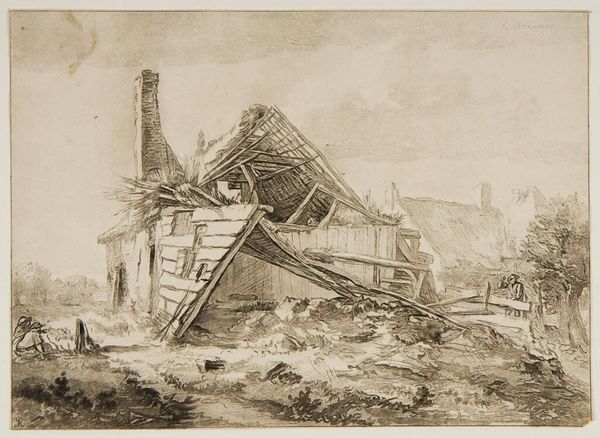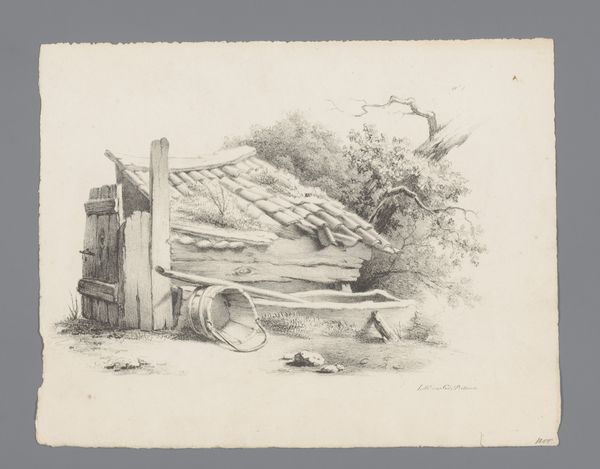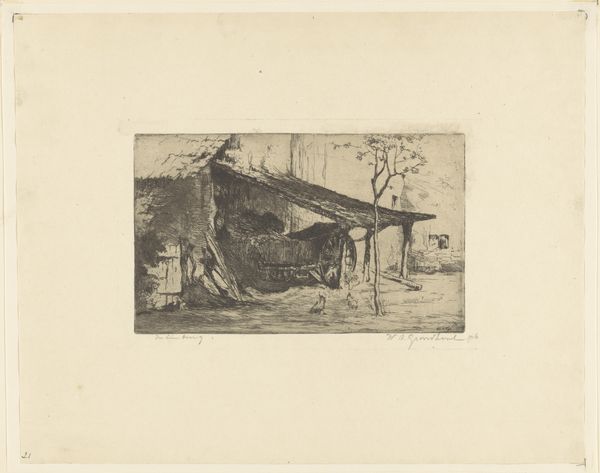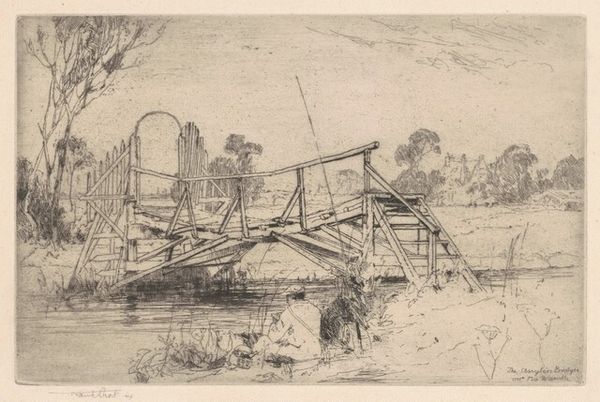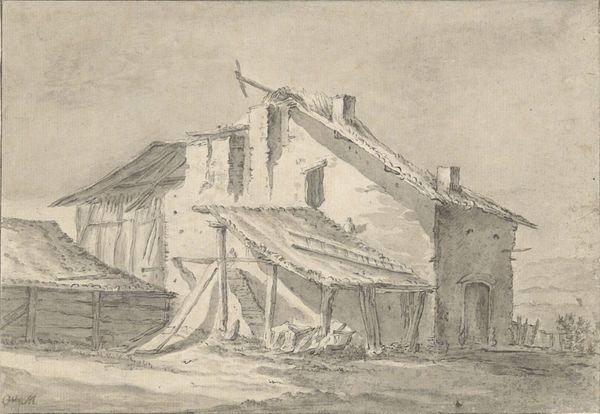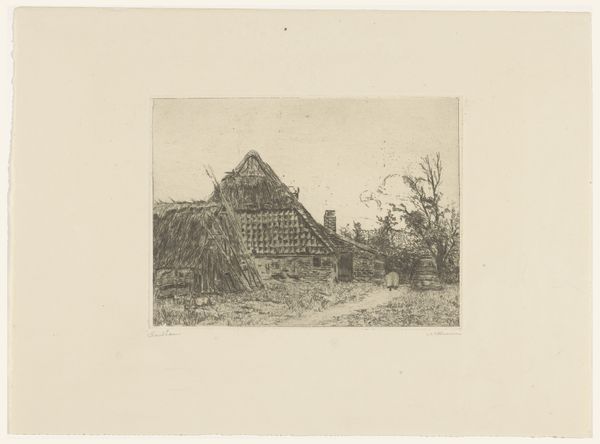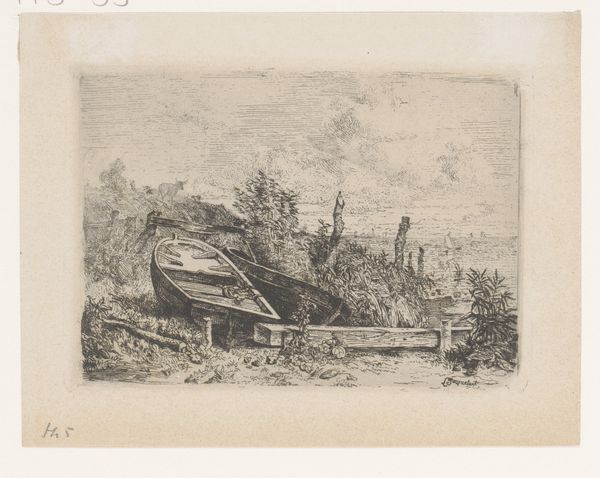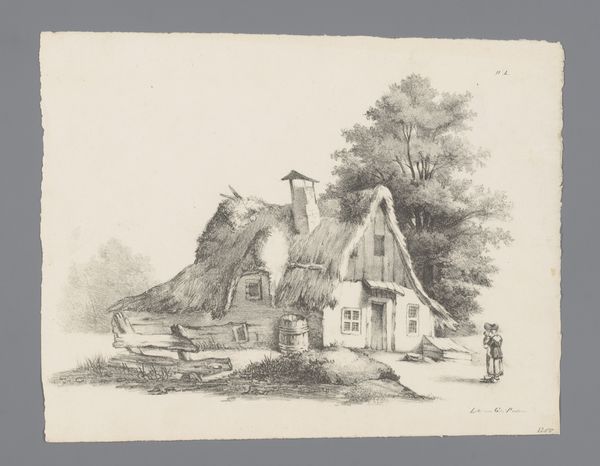
drawing, paper, pencil
#
drawing
#
landscape
#
paper
#
pencil
#
cityscape
Dimensions: height 196 mm, width 272 mm
Copyright: Rijks Museum: Open Domain
Cornelis Brouwer created this drawing, Vervallen boerderij, with pen and gray ink, and brush in gray, sometime in the late 18th century. The drawing’s material qualities—the delicate lines and tonal washes of the pen and brush—lend themselves beautifully to the subject: a dilapidated farmhouse. Brouwer captures the scene with sensitivity, emphasizing the textures of decaying wood and crumbling thatch. You can almost feel the weight of the collapsed roof. The drawing is not just about the house itself, but also the circumstances that led to its state of disrepair. We can imagine the labor involved in constructing the building, and the lives of those who once inhabited it. The fact that Brouwer chose to depict the farmhouse in ruins suggests a commentary on the economic and social forces that were transforming the Dutch countryside at the time. By focusing on the material and social context of this drawing, we can appreciate it not just as a beautiful work of art, but also as a poignant reflection on the human condition. It challenges the traditional art history by looking at the wider context of labor and social commentary.
Comments
No comments
Be the first to comment and join the conversation on the ultimate creative platform.


